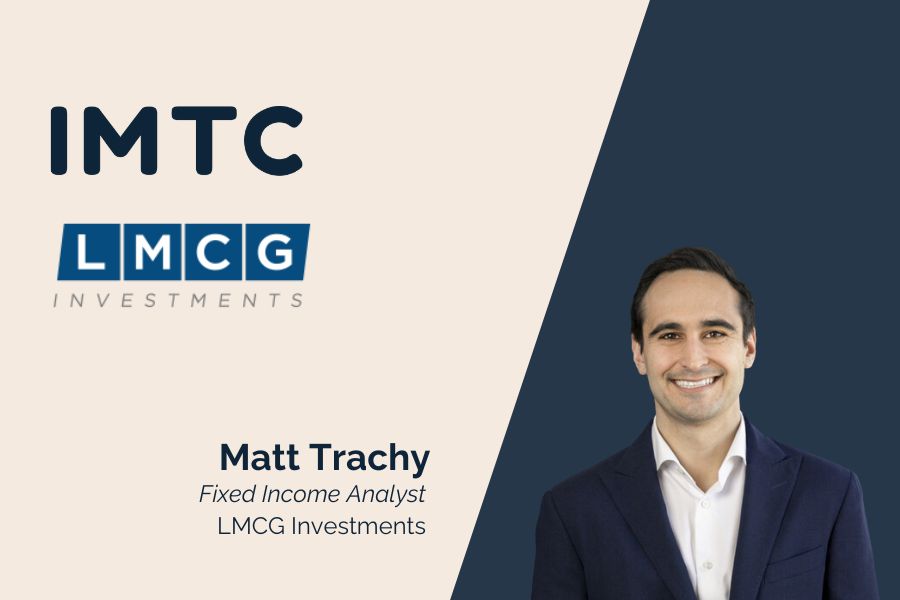Spotlight Series: Blake Lynch on the Future of Fixed Income Technology

Q: Blake, could you start by giving us a quick background on yourself and what drew you to IMTC?
Blake: Sure. I’m the Head of Sales at IMTC and have been here for a little over seven years. Before joining, I spent my early career in financial services, starting at a municipal bond specialty firm where I built customized bond portfolios—mostly in Excel, which wasn’t designed for fixed income. Later, I worked at a large asset manager in Boston, where I focused on fixed income and product launches.
During that time, I met with advisors across the country and noticed that personalization was key, yet mutual funds and ETFs didn’t allow for true customization. When I eventually met the IMTC team in New York, their vision for delivering bespoke fixed income technology really resonated with me. I’ve always had an entrepreneurial spirit and love building things that improve client outcomes. Joining IMTC as one of the first sales hires was a leap of faith, but it has turned out to be one of the most rewarding experiences of my career.
Q: What’s the biggest change you’ve seen in fixed income markets or portfolio management during your career?
Blake: The biggest shift has been access to data and how firms use it. Even today, many large investment managers still rely heavily on Excel, which brings risk and inefficiency. At IMTC, we’ve been able to reduce manual Excel work by about 80% through automation, freeing up portfolio managers to focus on decision-making rather than data wrangling.
Fixed income has historically lagged in adopting technology, but now portfolio managers can operate across thousands of portfolios in just a few minutes. The speed, scale, and accuracy of decisions have completely transformed.
Q: And what persistent challenges do asset and wealth managers still face today?
Blake: Access to the right technology has always been a challenge—it’s historically been expensive and complicated to implement. Many firms have been stuck with legacy systems from the 80s and 90s.
What’s changed is the rise of cloud-based platforms like IMTC. We manage integrations and provide modern infrastructure so managers don’t need massive internal tech teams to implement solutions. This makes it easier and faster for advisors, wealth managers, and asset managers to adopt the tools they need.
Q: How did your previous roles shape your perspective on the problems IMTC now solves?
Blake: When I was managing portfolios, I spent countless hours manually swapping bonds in Excel, calculating income, and modeling scenarios. Today, IMTC can do that in seconds.
At the asset manager level, figuring out what was driving alpha often took endless meetings. With IMTC, managers can see clearly where they’re adding value, personalize portfolios at scale, and make their products stickier. That personalization not only improves outcomes but also deepens client relationships.
Q: Can you share a specific story that highlights how technology solves those pain points?
Blake: One of my favorite moments is during product demos with heads of fixed income or portfolio managers. They’ll ask, “Can we do this?”—and we show them on the spot. Their reaction is always the same: an immediate “aha” moment.
Many of these managers have been stuck on outdated systems for years. Being able to instantly demonstrate the flexibility of our platform—adding custom fields, optimizing workflows, and streamlining operations—is incredibly rewarding.
Q: What kind of transformation do you see when clients modernize their portfolio management with IMTC?
Blake: We call it operational intelligence. Clients gain efficiency by automating maintenance tasks and freeing up time for higher-value work. For example, some portfolio managers spend up to eight hours on a major rebalance. With IMTC, that process takes just two and a half minutes.
That gives managers more time to do fundamental research, meet with clients, and pursue better investment opportunities. Ultimately, it allows the best people to focus on what matters most.
Q: What feedback or “aha moments” have you heard from clients?
Blake: Early conversations often come with skepticism because we say we can do a lot—and quickly. But once we demo using their own data and portfolios, clients see how fast and scalable the solution really is.
It’s rewarding to watch operations teams, tech teams, and portfolio managers all realize the impact simultaneously. They see that IMTC isn’t just about efficiency—it’s about helping them scale their businesses without massive increases in fixed costs.
Q: Looking ahead, what trends will shape fixed income technology over the next five years?
Blake: Operational infrastructure will be critical. Data transparency is improving, new products are emerging, and integration across systems is becoming easier. The next five years will be about making all these pieces work seamlessly together so managers can deliver better outcomes.
Q: Finally, what advice would you give PMs and CIOs just beginning their digitization journey?
Blake: Start by identifying your biggest pain points and choosing technology partners who specialize in solving them. There’s no one-stop shop for equities and fixed income—you’ll want best-of-breed solutions that work well together.
Also, look for partners who are future-proof. At IMTC, for example, we operate on a single version of the platform, so clients always get the latest innovation without costly upgrades. The goal is to adopt technology that not only solves today’s problems but evolves with you to deliver better client outcomes in the long run.





